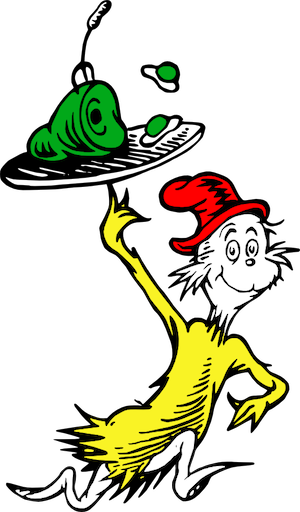Image: Theodore Geisel
Dr. Seuss’s Green Eggs and Ham was written on a bet. In 1960 the co-founder of Random House, Bennet Cerf, bet Theodore Geisel (Dr. Seuss) that he couldn’t write a children’s book using fifty or fewer distinct words. Geisel took the challenge and created Green Eggs and Ham using precisely fifty words. It went on to be the most popular of all his books. To date it has sold over 200 million copies. Despite the book’s success, Cerf never made good on the bet.
Green Eggs and Ham, like many of Geisel’s books, takes a valuable lesson and wraps it inside a fantastical yarn. Kids have way too much fun reading his books to be aware of the lasting messages they carefully implant. The Teaching Children Philosophy website says Green Eggs and Ham “raises the question of the role that experience plays in the formation of our beliefs.”
Green, a colour generally associated with healthy foods like peas, spinach and broccoli, becomes the book’s catalyst. Eggs and ham that are green – what’s going on here? Have they gone bad? These colours aren’t right. The story ventures into the realm of “irrational prejudice” where decisions are made without actual experience. The food ends up tasting great, regardless of its appearance. Yet another impactful and, in this instance, timely parable from the master of storytelling – Dr. Seuss.
